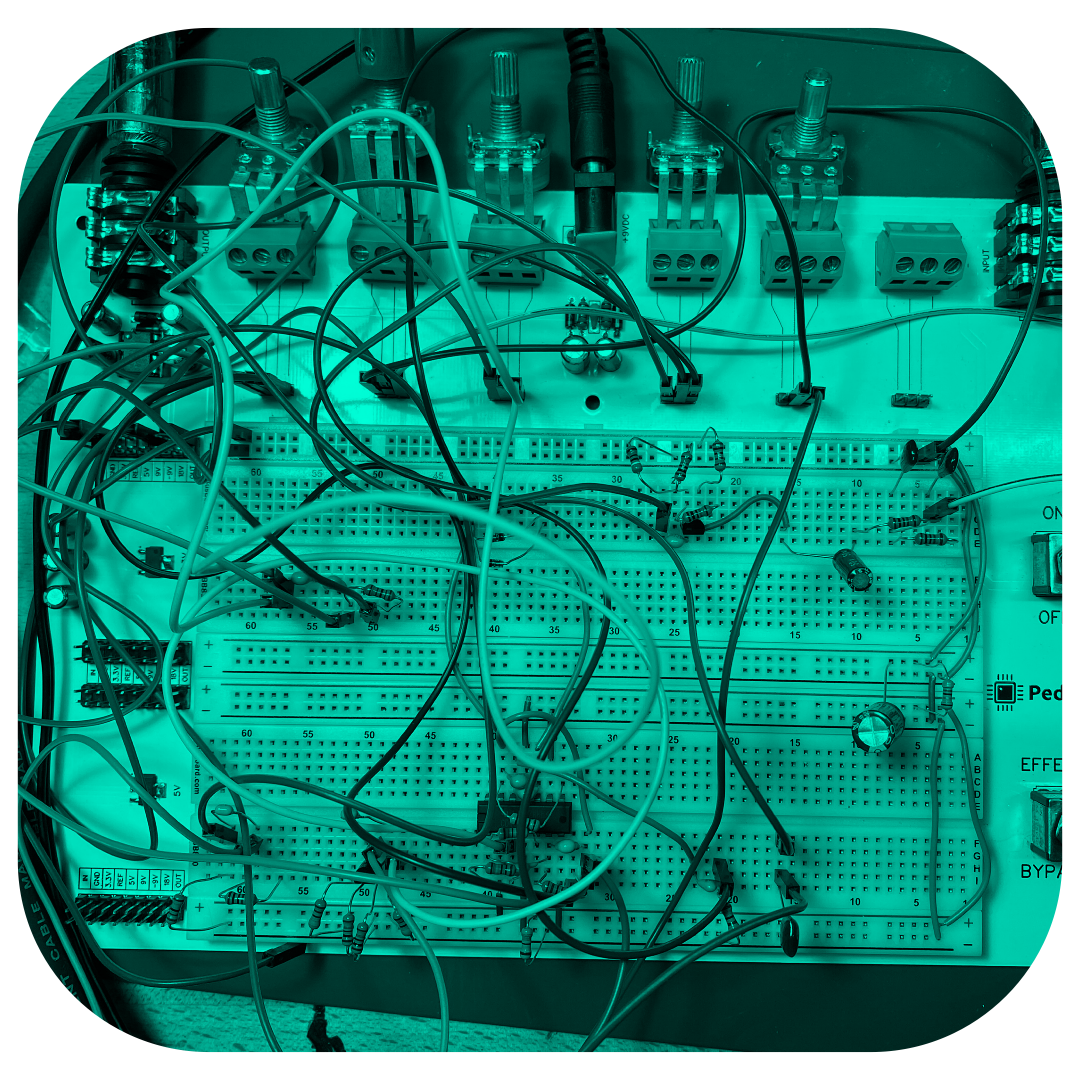
Another Big Muff?
Share
Ever since making a Red Llama clone last year - one of my first pedals! - I've become fascinated by CMOS inverters. Basically, if you don't know, a CMOS inverter is an integrated circuit (IC chip) that, in this application, makes sounds be louder. While increasing the volume, the signal "clips," or gets distorted, because each stage of the chip can only handle so much volume before getting overloaded. The way these CMOS inverter chips "clip" is frequently described as "tube-like," full of even-order harmonics for a dynamic, creamy, squishy, lively, (insert your favorite inane descriptor here), tone. I dig it. It's a nice sound that works well even on my tiny little benchtop amp.
Since making the Red Llama clone, I've made a couple of different CMOS-based overdrives such as the Catalinbread Supercharged Overdrive and Hyperpak. They're really simple and unfussy to build and - again - sound great in a lot of different settings.

One of the greats, a "founding father" of sorts for the DIY pedal-building community, is RunOffGroove. They were pioneering in developing JFET-based amp emulation circuits, simplifying modulation effects, and adapting popular overdrive and fuzz circuits to use CMOS inverters instead of transistors or op-amp chips. Back in 2008 they published a schematic for a CMOS implementation of the Big Muff following standard Muff topology: 4 gain stages with 2 clipping sections and a tone knob. It's pretty neat! I have to admit I haven't built one myself, but there are examples on the YouTubes and whatnot.
There are a few different CMOS inverter chips you can use for overdrivey sounds, and without getting too technical, I have a bunch of a particular kind that allows for some extra flexibility in tone shaping (the CD4007, the kind Catalinbread used for the SCOD). However, they only have 3 inverter stages, so not enough to make a traditional 4 stage Big Muff.
Ah! But my favorite Big Muff, the Op-Amp Big Muff, has a totally different topology and uses only 3 gain stages! Perfect!

So that's what I made here. The gain architecture is heavily indebted to the work of Chuck D. Bones and his CMOS Overdrive Deluxe. However, I am finding recently that I really really appreciate it when a drivey-dirt pedal can do low-gain tones so I found that I had to implement the gain knob like how the boys over at Catalinbread did it for the SCOD. I also found I needed to add an input buffer and output boost to keep things clear and sparkly at low-gain. I know, not very Muff-like, but versatility is a marvelous thing. Also - yeah, with the MOSFET ins and outs, it's technically 5 gain stages, but the 3 that really contribute towards the fuzzy tones are coming from the CMOS chip. And for extra MOSFET goodness I've got some 2N7000's in the clipping section.
So, we've got a couple sound examples and a schematic to look at. While I'm mostly just thrilled to have a concept that I've been mulling over and drafting schematics for months out making noises, I think I like it enough to make this the "Op-Amp" version of the Super High Output MOSFET Muff. Now if I can just find time to lay out the PCB design....
